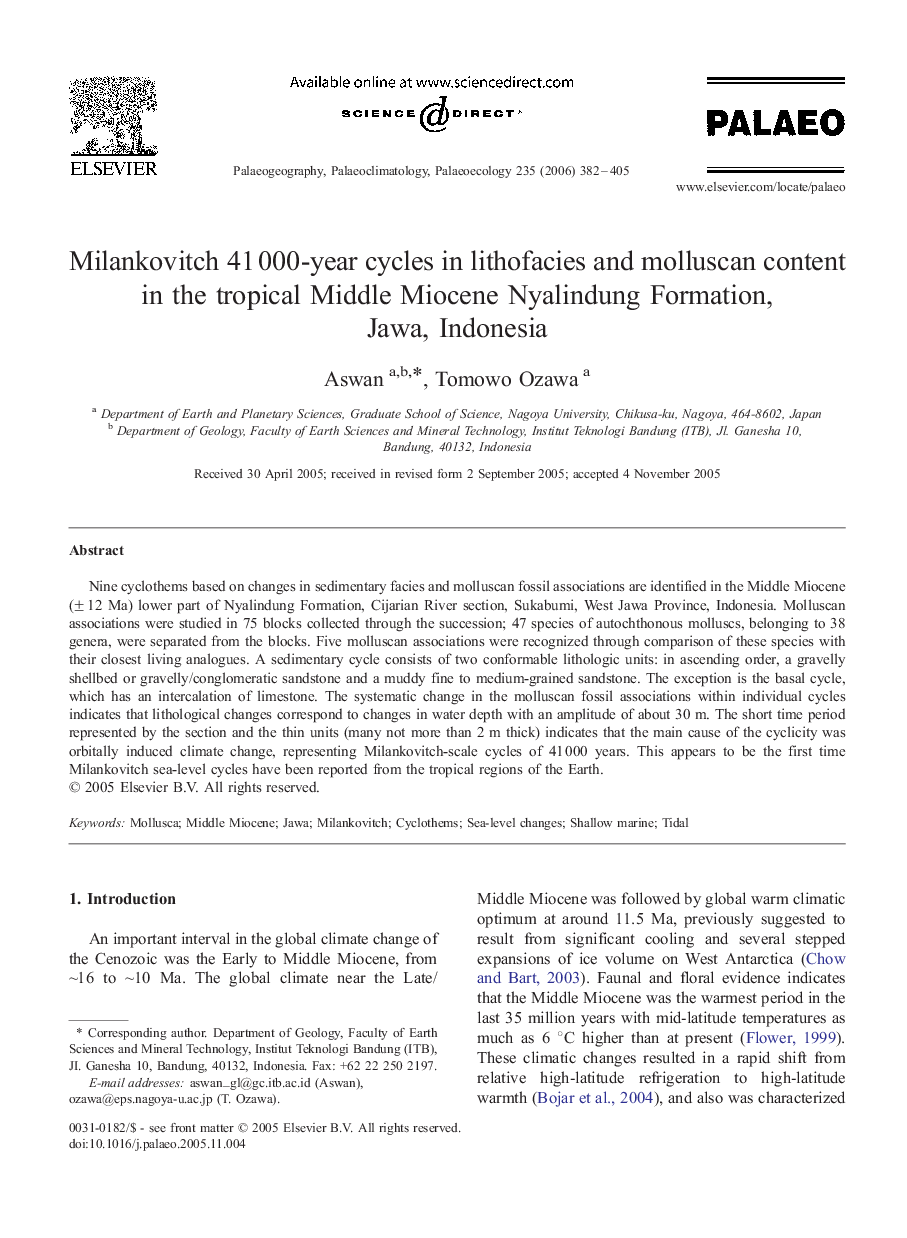| Article ID | Journal | Published Year | Pages | File Type |
|---|---|---|---|---|
| 4469525 | Palaeogeography, Palaeoclimatology, Palaeoecology | 2006 | 24 Pages |
Nine cyclothems based on changes in sedimentary facies and molluscan fossil associations are identified in the Middle Miocene (± 12 Ma) lower part of Nyalindung Formation, Cijarian River section, Sukabumi, West Jawa Province, Indonesia. Molluscan associations were studied in 75 blocks collected through the succession; 47 species of autochthonous molluscs, belonging to 38 genera, were separated from the blocks. Five molluscan associations were recognized through comparison of these species with their closest living analogues. A sedimentary cycle consists of two conformable lithologic units: in ascending order, a gravelly shellbed or gravelly/conglomeratic sandstone and a muddy fine to medium-grained sandstone. The exception is the basal cycle, which has an intercalation of limestone. The systematic change in the molluscan fossil associations within individual cycles indicates that lithological changes correspond to changes in water depth with an amplitude of about 30 m. The short time period represented by the section and the thin units (many not more than 2 m thick) indicates that the main cause of the cyclicity was orbitally induced climate change, representing Milankovitch-scale cycles of 41 000 years. This appears to be the first time Milankovitch sea-level cycles have been reported from the tropical regions of the Earth.
